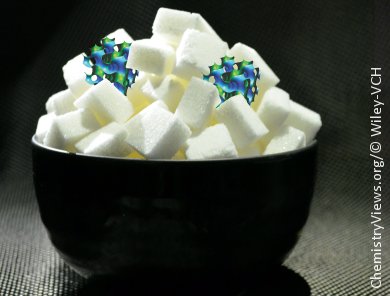Control and understanding of the nanostructure of self-assembled amphiphilic compounds is essential for applying them to biomedical applications, such as membrane-bound protein crystallization, magnetic resonance imaging (MRI) agents for advanced cosmetic and nutriceutical delivery, and in biosensing and biofuel cells. For any given application, a particular lyotropic phase is usually required. To date, there has been a limited pool of amphiphiles available for task-specific applications, limited by the time-consuming task of synthesis, purification, and characterization.
Calum J. Drummond, G. Paul Savage, and co-workers, CSIRO Materials Science and Engineering, Australia, describe the high-throughput synthesis and characterization of a library of 24 amphiphiles. These have galactose and glucose head groups and show systematic variation in hydrocarbon chain length, degree of unsaturation, and head-group geometry. The copper-catalysed azide–alkyne cycloaddition (CuAAC) “click” reaction between azide-tethered simple sugars and alkyne-substituted hydrophobic tails was employed for the synthesiis. The thermal and lyotropic phase behavior of these amphiphiles was characterized by using high-throughput small-angle X-ray scattering.
This method enables the discovery of novel amphiphiles without the need for time-consuming and financially laborious laboratory-scale synthesis and analysis and has increased the number of single-chain sugar-based amphiphiles presently available.
- The High-Throughput Synthesis and Phase Characterisation of Amphiphiles: A Sweet Case Study
George C. Feast, Oliver E. Hutt, Xavier Mulet, Charlotte E. Conn, Calum J. Drummond, G. Paul Savage,
Chem. Eur. J. 2014.
DOI: 10.1002/chem.201303514




